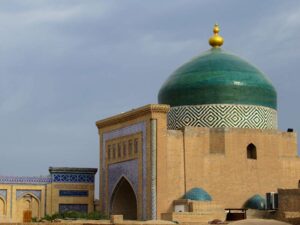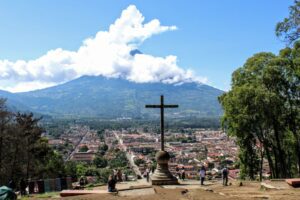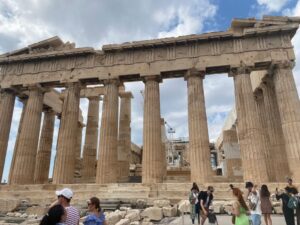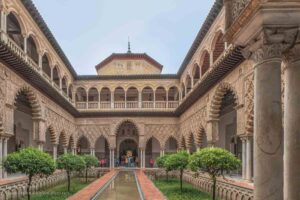Palau de la Música Catalana and Hospital de Sant Pau
Two exceptional examples of Catalan Art Nouveau architecture in Barcelona designed by Lluís Domènech i Montaner.

Two exceptional examples of Catalan Art Nouveau architecture in Barcelona designed by Lluís Domènech i Montaner.

A lavish retreat built for Roman emperor Hadrian in the 2nd century.

A charming medieval city center, considered the birthplace of Portuguese nationhood.

Six buildings that are unique to the short-lived Asturian monarchy.

A well-preserved colonial city that reflects both Spanish and Portuguese influences.

An intact Renaissance city full of Spanish-colonial baroque architecture.

Centuries-old architectural ensembles in Flanders that once housed religious communities of women.

An ensemble of warehouses and office buildings resulting from Hamburg’s port trade in the 19th and early 20th centuries.

A medieval walled city of unique gated communities and many architectural monuments in a mix of styles.

A medieval fortress town in a dramatic location, perched on cliffs.

A massive mud-brick fortress, the capital of the Banu Nebhan and the centre of Ibadism in the Middle Ages.

Mountain villages with unique traditional farmhouses where silkworms were cultivated.

Remains of an 8th-century Umayyad town that offers insight into Umayyad town planning and architecture.

An outstanding example of Modern architecture of the 1920s, designed by Mies van der Rohe.

Four masterpieces of Pisan Romanesque architecture, including the world-famous Leaning Tower.

An early example of a city that developed due to tourism.

An important 19th-century port city that preserves its urban industrial architecture to this day.

An unfinished mausoleum and mosque that allows an understanding of Timurid construction methods.

An excellent illustration of the traditions of Islamic architecture in Central Asia.

A unique example of urban planning from the Middle Ages that has developed over time while still respecting the original plan.

A colonial-period silver-mining center, with subterranean streets and Baroque architecture.

A summer retreat for China’s emperors, with extensive classical gardens, an artificial lake, and a collection of palace buildings.

A religious complex used by Ming and Qing dynasty emperors that is significant both symbolically and architecturally.

A charming traditional Chinese town that combines Naxi, Han, Bai and Tibetan influences.

Ruins of an ancient place of healing, with a huge and still intact Greek theater.

Former home to the powerful Habsburg emperors: an opulent Baroque castle and its gardens.

An exquisite example of Portuguese Baroque architecture expressing a spiritual journey.

A lovely city that illustrates Spanish colonial-era architecture, city planning, and culture.

The most famous remnant of ancient Greece, standing high above the city of Athens.

Four sets of pre-Columbian ruins that exemplify Mayan art and architecture when Mayan civilization was at its height.

Three properties that are central to the history of Spain’s “Golden Age.”

Famous Georgian-period spa town with surviving elements from its Roman-period history as well.

Four pioneering works of architecture in Art Nouveau style.

A series of palaces and estates in and around Turin that exemplify baroque architecture.

A landmark of 20th-century architecture on Sydney Harbor.

One of the most impressive baroque structures in all of Portugal.